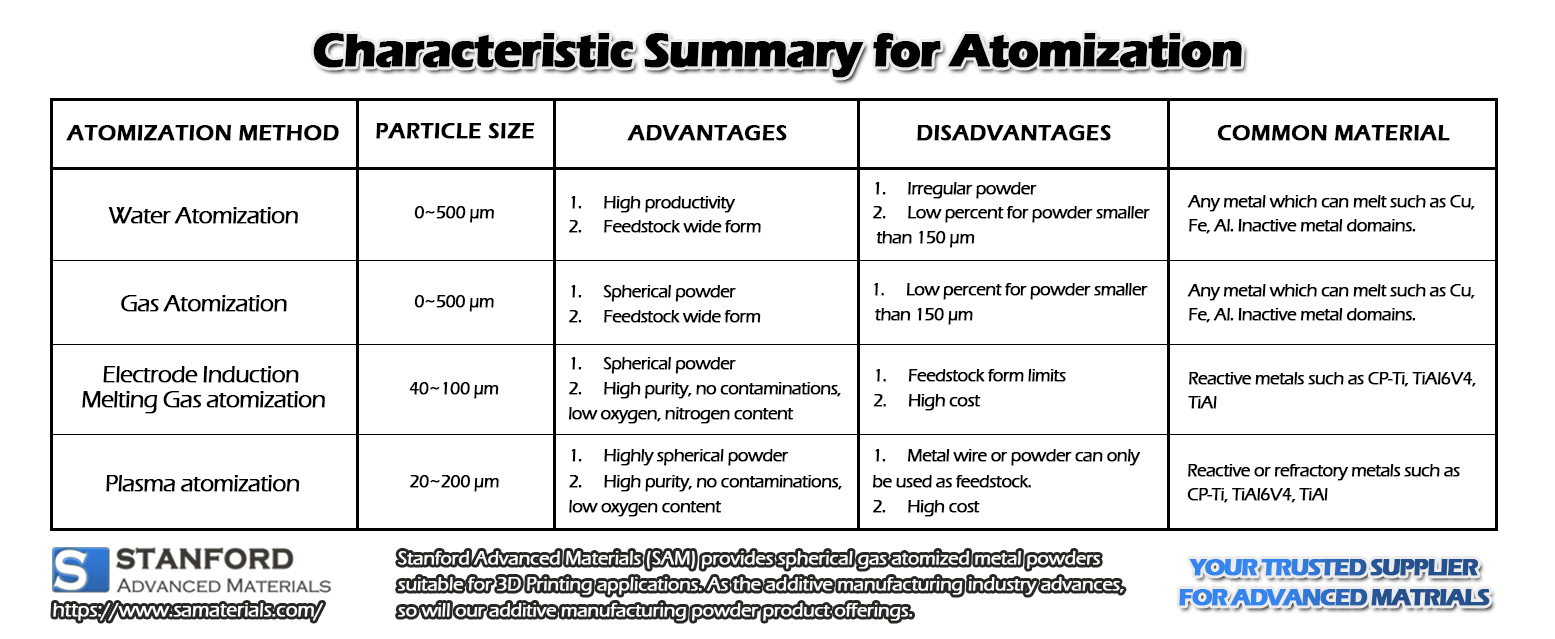3D Printing Powder: What is it & How is it Used?
3D printing, a more commercial name for Additive manufacturing (AM), was first mentioned by Murray Leinster in the 1940s. Although 3D printing is less than 1% of the global manufacturing market its advantages compared with traditional manufacturing make the 3D printing market almost double in size every 3 years. The global 3D printing market is expected to grow 20.8% annually from 2022 to 2030 [1]. By its wide application in healthcare, automotive, aerospace, defense and etc., 3D printing is undisputedly one of the most popular manufacturing methods in the future.
3D printing has 7 divisions: Vat photopolymerization, Material jetting, Material extrusion, Binder jetting, Powder bed fusion, Sheet lamination, and Directed energy deposition. The last 4 divisions all use 3D printing powder as their feedstock.
What is 3D Printing Powder?
3D printing powder refers to powder used in 3D printing. It is usually made of metal, alloy, ceramic, or polymer.
3D printing powder can be divided into 2 groups by shape: spherical and irregular. Spherical 3D printing powder shows better flowability. In other words, spherical 3D printing powder can spread more evenly and make homogeneous layers to make stronger components. But at the same time, spherical 3D printing powder is more expensive than irregular powder.

How is 3D Printing Powder Produced?
Most experiments manufacture 3D printing powder by atomization, including water atomization and gas atomization.
Water atomization (WA)
Atomization begins with melting the feedstock alloy/ metal (any shape is acceptable) in a furnace. Then, hold for some time to make sure the melting liquid is homogeneously distributed. After that, transfer the liquid into a crucible with a refractory nozzle which can control the flow rate. Open the nozzle and let the liquid enter the atomization chamber. It falls freely and is then cooled, atomized, and consolidated by high-speed water jets. Finally, you can collect the powder at the bottom of the chamber. Another step needed later is drying the powder.
The powder produced by water atomization is usually irregular and will not be used in 3D printing.
Gas atomization (GA)
The gas atomization is similar to water atomization except for the atomization process. It uses high-pressure gas flow (usually inert gas) to atomize the powder. Because the specific heat capacity of gas is smaller than that of water. It will take more time for droplets to cool down and consolidate. As a result, the powder produced by gas atomization will be more spherical. the diameter of the powder, however, is hard to control well and ranges from 0 to 500μm. Even if we use inert gas during all processes, contaminations can still happen when we transfer the melting liquid from the furnace to the crucible or in other steps.
Electrode induction melting gas atomization (EIGA)
Electrode induction melting gas atomization (EIGA) was developed based on gas atomization. Instead of using the crucible to cover the melting metal liquid, EIGA uses rotating metal rods as its feedstock, which is melted by induction heat. The melting rods can directly fall into the atomization chamber.
EIGA can produce powder in a smaller particle range, and it gradually becomes the main method to produce active alloy powder such as Ti-6Al-4V.
Plasma atomization (PA)
Plasma atomization (PA) uses plasma as the heat source to melt the feedstock, which should be in powder or wire form. When the feedstock torches the plasma, it will be simultaneously melted and atomized by the inert gas jets. The following steps are the same as gas atomization.
Plasma atomization can produce more spherical and smaller size powder.
Table 1 shows the summary of the 4 atomization methods mentioned above.

How is 3D Printing Powder Used?
3D printing powder is mainly used in powder bed-based 3D printing technologies such as powder bed fusion, and binder jetting. The key principle of these technologies is to build the components layer by layer by using 3D printing powder. With this layer-by-layer process, we can make more complicated and customized products compared to traditional technologies.
A roller/recoater takes the powder (usually metal or polymer spherical powder such as spherical titanium powder) from the delivery system and spreads an even thin layer on the base plate. Then, a laser beam selectively fuses powder. A thin layer is produced and then the build platform will move down by a layer’s distance and the delivery system will move up by a layer’s distance to continue the repeated steps. This is called powder bed fusion.
Another technology uses a binder to combine the powder. Other processes are very similar to powder bed fusion. This is called binder jetting.
The powder is the feedstock to spread on the plate to form a thin layer. In order to get more tough and detailed components, the parameters of the powder are really important. The irregular powder cannot form homogeneous and high-density (less porous) layers, and it will lead to low-density components even if 3D printing crashes during printing. Spherical powder performs better but also costs more. Smaller particle powder can form a thinner layer, in other words, with more powder consumed for the same thick layer. The layer is finer and more delicate than those produced by larger particle powder. Be careful while using powder smaller than 20 μm, which can be very easily caked and form an ununiform layer. Special technologies are required for this kind of powder.
For more information, please visit Stanford Advanced Materials Homepage.
Reference
1. 3D Printing Market Size & Share Report, 2022-2030. (n.d.). Retrieved December 7, 2022, from https://www.grandviewresearch.com/industry-analysis/3d-printing-industry-analysis








